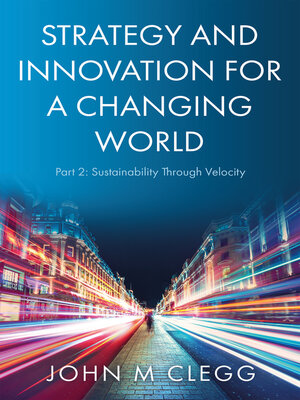Strategy and Innovation for a Changing World Part 2
ebook ∣ Sustainability Through Velocity
By John M Clegg

Sign up to save your library
With an OverDrive account, you can save your favorite libraries for at-a-glance information about availability. Find out more about OverDrive accounts.
Find this title in Libby, the library reading app by OverDrive.



Search for a digital library with this title
Title found at these libraries:
| Library Name | Distance |
|---|---|
| Loading... |
Invention and innovation are not the same. When we come up with an exciting and original new idea, by itself that idea is not an innovation. It is simply an invention, possibly a great invention, but at that point the hard work is still to be done. Innovation is that hard work. It is the process of turning that idea into something of value. In fact, innovation doesn't necessarily need a great new idea to get it started. It is often nothing more than the recombination of existing ideas that happen to be lying around.
In an accessible and non-technical way, this second of two books in the series builds on an understanding of strategy and value creation acquired in Part 1 and provides a toolbox of ideas and processes to guide the reader through the innovation journey as simply and as quickly as possible, maximising velocity and minimising time to market. It shows the reader how to leverage the capabilities of others and how to use ecosystems to extend the capabilities of the organisation. It then shows how to generate the ideas that will use those capabilities to capitalise on customer or stakeholder needs; how to build a team; the importance of both strategy and culture; and how to manage the innovation process as efficiently and effectively as possible. It builds on more than three decades of the author's experience and using anecdotes from a wide variety of industries and businesses it allows the reader to benefit from the successes – and to learn from the mistakes – of others. In short, it shows how the key to success is largely making things as simple as possible!







